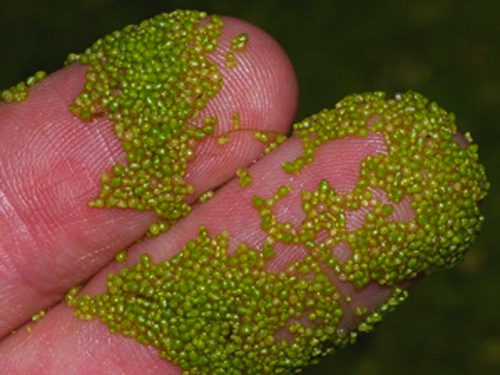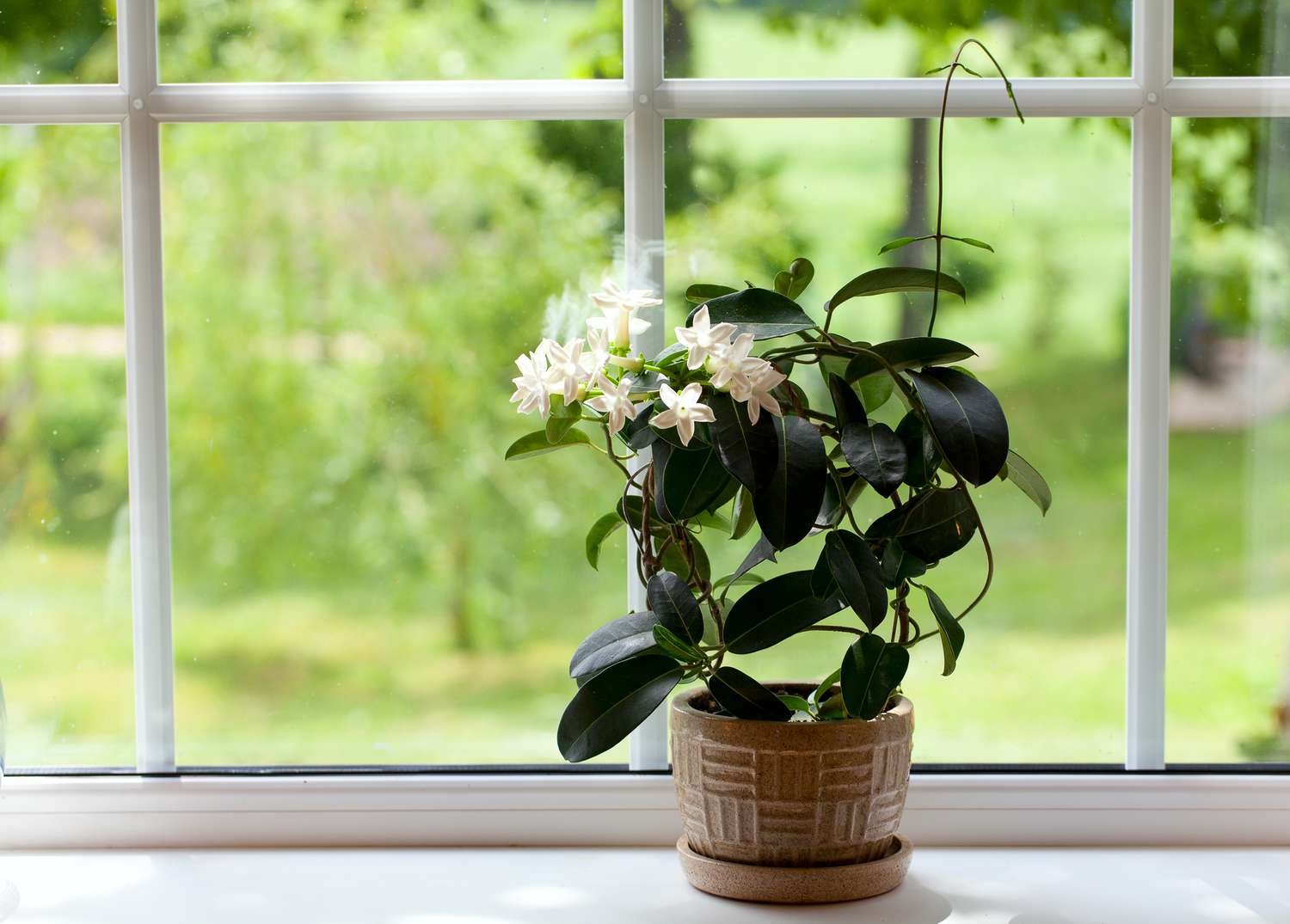The smallest flowering plants are fascinating and often overlooked. They thrive in various environments and have unique adaptations.
Flowering plants, or angiosperms, come in all sizes. While we often admire big, vibrant blooms, some of the tiniest flowering plants are equally remarkable. These miniature marvels can fit in the palm of your hand or even float on water surfaces.
Despite their size, they play vital roles in their ecosystems. Understanding these small wonders can give us a deeper appreciation of nature’s diversity. In this blog post, we will explore some of the smallest flowering plants, their habitats, and their unique characteristics. Whether you’re a plant enthusiast or just curious, you’ll find these tiny plants intriguing. Let’s dive into the world of miniature blooms and discover their secrets.

Credit: online.kidsdiscover.com
Introduction To Smallest Flowering Plants
Discover the world of the tiniest flowering plants. These plants, like duckweeds and watermeal, are fascinating. They grow in ponds and lakes, creating beautiful green carpets.
Flowering plants come in many sizes. Some are very small. These tiny plants are often overlooked. Yet, they play a big role in nature. This blog post explores the smallest flowering plants. We will learn about their importance and unique features.Defining Small Flowering Plants
Small flowering plants are tiny but mighty. They produce flowers, despite their size. These plants can be found in various environments. Some grow in water, while others thrive on land. Their flowers may be small, but they are still important.Importance In Ecosystems
Small flowering plants support ecosystems. They provide food for insects and animals. These plants also help in pollination. Small plants can grow in places where larger plants cannot. They help prevent soil erosion. Their presence maintains the balance of nature.Wolffia: The World’s Smallest Flowering Plant
Wolffia is a tiny, fascinating plant. It holds the title for the world’s smallest flowering plant. This unique plant belongs to the duckweed family. It floats on the surface of calm waters. Its microscopic size makes it hard to spot. Yet, its impact on ecosystems is significant.
Physical Characteristics
The Wolffia plant is minute, measuring only 0.3 to 0.5 mm in size. It lacks traditional features like stems and leaves. Instead, it appears as a small, green, grain-like structure. The plant is often mistaken for algae. But it is a true flowering plant, producing tiny flowers.
| Feature | Description |
|---|---|
| Size | 0.3 to 0.5 mm |
| Color | Green |
| Structure | Grain-like, no stems or leaves |
Growth And Habitat
Wolffia thrives in still or slow-moving waters. Common habitats include ponds, lakes, and marshes. It prefers warm climates but can be found globally. The plant reproduces rapidly, doubling in number within days. Wolffia plays a crucial role in aquatic ecosystems. It provides food for fish and waterfowl.
- Preferred Habitat: Ponds, lakes, marshes
- Climate: Warm, but found worldwide
- Reproduction Rate: Doubles within days
Wolffia’s rapid growth can cover water surfaces quickly. This can sometimes create dense mats. These mats help filter and clean water, benefiting the environment. Its presence indicates healthy water bodies. Understanding Wolffia helps appreciate the balance of aquatic ecosystems.
Lemna: Another Tiny Flowering Plant
Lemna, or duckweed, ranks among the smallest flowering plants globally. Its tiny leaves float on water, creating green mats. Ideal for studying plant biology and ecology.
Lemna, often known as duckweed, is a tiny flowering plant. It floats on the surface of still or slow-moving water. These plants are so small that they often go unnoticed. Despite their size, they play a crucial role in aquatic ecosystems.Identification And Features
Lemna plants are small, green, and flat. They usually measure between 1 and 5 millimeters. Each plant consists of a single leaf-like structure called a frond. The frond has tiny roots hanging beneath it. Lemna flowers are rare and very small. They usually consist of one pistil and two stamens.Ecological Role
Lemna plays a vital role in water bodies. They provide food for fish and waterfowl. They also help in controlling algae growth. Their rapid growth absorbs excess nutrients from the water. This helps in maintaining a balanced ecosystem. Lemna plants also offer shelter for small aquatic creatures. “`Utricularia: Small But Unique
Utricularia, also known as bladderworts, are some of the smallest flowering plants. Despite their tiny size, they possess unique characteristics. These fascinating plants belong to the carnivorous family. Their name comes from the tiny bladder-like traps they use to capture prey.
Carnivorous Nature
Utricularia plants are carnivorous. They trap and digest small organisms like insects. Their bladder traps create a vacuum to suck in prey. This process happens in a fraction of a second. The plant then digests the prey to absorb nutrients.
Habitat Preferences
Utricularia species thrive in wet environments. They are found in freshwater and wet soil. Many grow in ponds, marshes, and swamps. They can also live in acidic conditions. Their adaptability to various habitats is remarkable.
The Role Of Tiny Flowering Plants In Water Bodies
Tiny flowering plants play a crucial role in water bodies. These plants might be small, but their impact is enormous. They contribute significantly to the health and balance of aquatic ecosystems. Understanding their role can help in preserving water bodies and maintaining biodiversity.
Contribution To Aquatic Ecosystems
Tiny flowering plants provide food for aquatic animals. They produce oxygen through photosynthesis, essential for underwater life. These plants also act as natural filters. They absorb pollutants and improve water quality. Their presence ensures a balanced ecosystem.
Interaction With Other Species
Small flowering plants interact with various aquatic species. They offer shelter and breeding grounds for fish and insects. Algae and microorganisms thrive around these plants. This creates a healthy food chain. Tiny flowering plants also compete with harmful algae. This keeps the ecosystem stable and prevents overgrowth.
Challenges Faced By Small Flowering Plants
Small flowering plants face many challenges. Their size makes them vulnerable. They struggle to get enough sunlight and nutrients. Larger plants often overshadow them. This makes survival difficult for these tiny wonders. Let’s explore some of the major challenges they face.
Environmental Threats
Small flowering plants are highly sensitive to environmental changes. Pollution, climate change, and habitat loss threaten their existence. These factors can alter the delicate balance of their ecosystems.
Human activities like deforestation and urbanization destroy their habitats. This leads to a decrease in their populations. They also suffer from water pollution and soil contamination. These factors make it hard for them to grow and reproduce.
Conservation Efforts
Conservation efforts aim to protect small flowering plants. These efforts include habitat restoration and pollution control. Scientists and environmentalists work together to create protected areas. These areas provide a safe space for these plants to grow.
Educating the public about the importance of these plants is vital. Awareness campaigns help people understand their role in the ecosystem. Support from local communities can aid in conservation.
Here is a table summarizing the key challenges and conservation efforts:
| Challenges | Conservation Efforts |
|---|---|
| Pollution | Pollution Control |
| Climate Change | Habitat Restoration |
| Habitat Loss | Protected Areas |
| Human Activities | Public Awareness |
These efforts are crucial. They help ensure the survival of small flowering plants. Every small action counts. Together, we can make a difference.
Benefits Of Small Flowering Plants
Small flowering plants offer numerous benefits. They are not just charming additions to any space; they also serve practical purposes. These tiny plants can thrive in various environments and provide valuable insights for science and nutrition.
Nutritional Value
Many small flowering plants are rich in nutrients. They often contain vitamins and minerals essential for health. For example, some small edible flowers can be a good source of vitamin C and antioxidants.
| Plant | Nutritional Benefits |
|---|---|
| Watermeal | High in protein |
| Duckweed | Rich in amino acids |
Including these plants in your diet can enhance your nutritional intake. They are often used in salads, soups, and even as garnishes. This makes them a versatile addition to your meals.
Use In Research
Small flowering plants are valuable in scientific research. They grow quickly and are easy to study. Scientists use them to understand plant biology and genetics.
For instance, the watermeal plant is used to study growth rates and nutrient absorption. Its tiny size allows for controlled experiments in small spaces. This makes it ideal for laboratory settings.
Researchers also use duckweed to study environmental impact. They examine how pollutants affect plant growth. This can lead to better environmental protection strategies.
In summary, small flowering plants are not only beautiful but also functional. They provide nutritional benefits and are crucial for scientific research.

Credit: en.wikipedia.org
Future Research Directions
Exploring the smallest flowering plants opens doors to exciting research. These tiny wonders hold secrets and potential benefits for science and everyday life. Future research will dive deeper into these areas to uncover more about these remarkable plants.
Unexplored Species
Many species of the smallest flowering plants remain unknown. Scientists aim to discover and catalog these hidden gems.
Key areas of focus:
- Identifying new species in remote regions
- Studying their unique adaptations
- Understanding their ecological roles
Researchers use advanced tools like genetic sequencing. These tools help in identifying and classifying new species. This data adds to our knowledge and appreciation of biodiversity.
Potential Applications
The smallest flowering plants have numerous potential applications. These applications can benefit various fields, including medicine and agriculture.
Some promising areas include:
- Developing new medicinal compounds
- Improving crop resilience
- Creating eco-friendly products
Researchers focus on bioactive compounds found in these plants. These compounds might lead to new drugs and treatments. Additionally, studying their resilience can help in developing hardier crops.
Understanding these tiny plants helps in creating sustainable solutions. Their small size and unique properties make them valuable in various industries.
:max_bytes(150000):strip_icc()/tiny-flowers-1315816-09-efd761ea1bb84a6fb1ac51fa75ea05b9.jpg)
Credit: www.thespruce.com
Frequently Asked Questions
What Is The Smallest Flowering Plant?
The smallest flowering plant is Wolffia, also known as watermeal. It’s part of the duckweed family. Wolffia’s size ranges from 0. 3 to 0. 6 millimeters.
Where Does Wolffia Grow?
Wolffia grows in freshwater habitats like ponds, lakes, and slow-moving streams. It floats on the water’s surface.
How Does Wolffia Reproduce?
Wolffia reproduces through vegetative budding. This means new plants form from the parent plant. It’s a rapid and efficient process.
Is Wolffia Beneficial To The Environment?
Yes, Wolffia is beneficial. It provides food for aquatic animals and helps in water purification. It absorbs excess nutrients.
Conclusion
Tiny flowering plants bring beauty to our world. They thrive in various environments. From water bodies to forest floors, these mini marvels adapt well. Duckweed, watermeal, and fairy moss are some examples. Their small size often goes unnoticed. But their role in ecosystems is significant.
They provide habitats and food sources for many creatures. Next time you see a pond, look closely. You might spot these tiny wonders. They remind us that big beauty can come in small packages. Enjoy discovering these smallest flowering plants in nature.
Keep exploring and learning about our diverse world.





